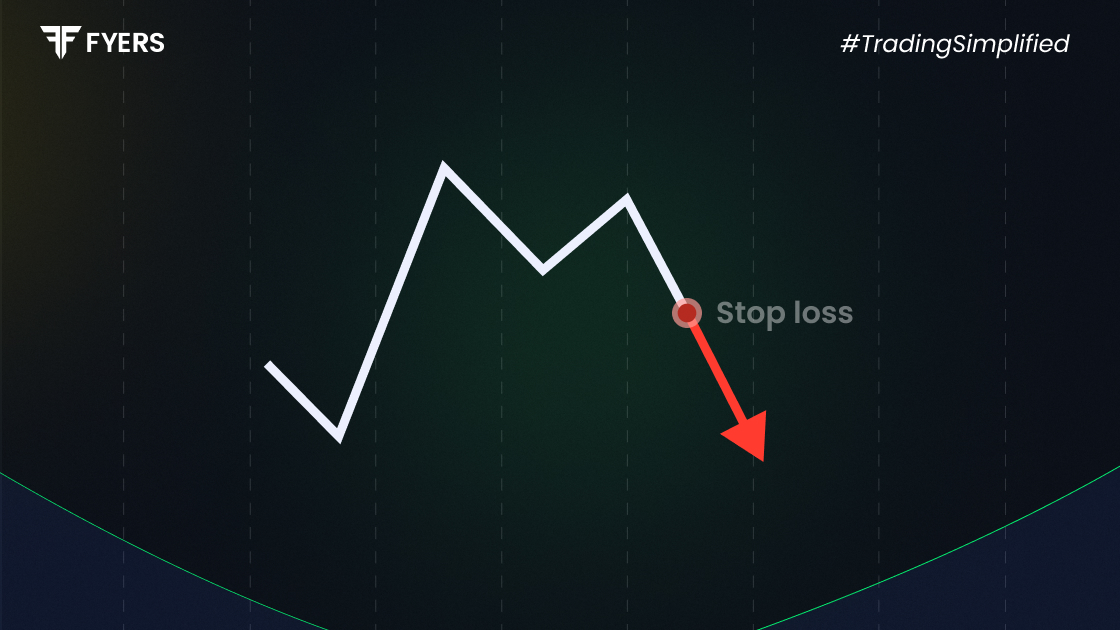

 27 Mar, 2025
27 Mar, 2025
 4 mins read
4 mins read

Investing in the stock market can be highly rewarding, but it comes with its risks. One of the key strategies traders use to protect their capital is implementing a stop loss. But what is stop loss in the share market, and how can it help traders minimise losses? Let’s break it down in simple terms.
A stop loss is a predetermined price level at which a trader or investor exits a trade to prevent further losses. Essentially, it is an automatic order placed with a broker to sell a stock when it reaches a specific price.
For example, if you buy a stock at ₹500 and set a stop loss at ₹450, your shares will automatically be sold if the price drops to ₹450. This helps limit potential losses and protects your investment from extreme market fluctuations.
Stop loss in the share market is a crucial tool in trading and investing for several reasons:
Risk Management: The primary purpose of a stop loss is to protect capital. By setting a stop loss based on the risk-reward ratio, traders can define the maximum amount they are willing to lose on a trade.
Emotion Control: The stock market can be highly volatile. A stop loss helps traders stick to their strategy rather than making impulsive decisions based on emotions.
Disciplined Trading: It enforces a disciplined approach by ensuring traders exit a trade when it is not going in their favor, preventing unnecessary losses.
Automated Protection: Stop loss orders execute automatically, so traders don’t have to constantly monitor the market.
There are different types of stop-loss orders, each serving a unique purpose. Understanding these can help traders choose the best option for their strategy.
A stop loss market order executes a trade at the next available price once the stop loss level is triggered. This ensures the trade gets executed but does not guarantee the exact price at which the order will be filled.
Example: If you set a stop loss at ₹200, and the stock suddenly drops from ₹205 to ₹198, your order will be executed at ₹198.
In a stop loss limit order, the order will only be executed at the set limit price or better. This gives traders more control over the execution price but runs the risk of the order not being filled if the price moves past the limit.
Example: If you set a stop loss limit order at ₹200 with a limit price of ₹198, the stock will only sell at ₹198 or higher. If the price falls below ₹198, the order may not be executed.
A trailing stop loss moves along with the stock price at a set percentage or amount. This helps lock in profits while still protecting against potential losses.
Example: If you set a trailing stop loss at 5% on a stock purchased at ₹500, the stop loss will initially be at ₹475. If the stock price rises to ₹550, the stop loss will move up to ₹522.50 (5% below ₹550).
Setting a stop loss correctly is key to using it effectively. Here are some strategies:
Consider Your Risk Tolerance: Determine how much loss you are willing to bear on a trade. A common rule is to set a stop loss at 1-2% of your total trading capital per trade.
Use Technical Analysis: Support and resistance levels, moving averages, and trend lines can help in deciding stop loss levels.
Set a Logical Stop Loss: Avoid setting a stop loss too tight, which might get triggered by minor price fluctuations. Similarly, avoid setting it too wide, which may result in significant losses.
Adjust as Needed: As the trade moves in your favor, adjust your stop loss accordingly (trailing stop loss) to secure profits.
Using stop loss in trading has several advantages:
Minimises Losses: It limits the downside risk in case the market moves against you.
Automates Decision-Making: The order executes automatically, removing emotional bias from trading.
Saves Time: Traders don’t need to monitor their trades continuously.
Protects Profits: Trailing stop losses helps secure profits while allowing room for potential gains.
Understanding what is stop loss in the share market and using it effectively can help traders manage risk and protect their capital. Whether you’re a beginner or an experienced trader, implementing stop loss strategies can help improve trading discipline and prevent excessive losses. Always consider your risk tolerance, market conditions, and investment goals when setting stop loss orders
A stop loss order sells the stock at the next available market price after the stop price is triggered, while a stop limit order executes only if the stock reaches the specified limit price or better. The key difference is that a stop loss guarantees execution but not price, while a stop limit guarantees price but not execution.
Long-term investors usually do not use stop loss orders as frequently as traders. However, in volatile markets, a stop loss can help protect long-term holdings from steep declines.
A good stop loss percentage depends on your trading style and risk tolerance. For short-term trades, 5-10% is common, while for long-term investments, a 15-20% stop loss might be more suitable.
Yes, you can modify your stop loss order at any time before it is executed. Many traders adjust their stop loss levels as the stock price moves in their favor to lock in profits.
Calculate your Net P&L after deducting all the charges like Tax, Brokerage, etc.
Find your required margin.
Calculate the average price you paid for a stock and determine your total cost.
Estimate your investment growth. Calculate potential returns on one-time investments.
Forecast your investment returns. Understand potential growth with regular contributions.